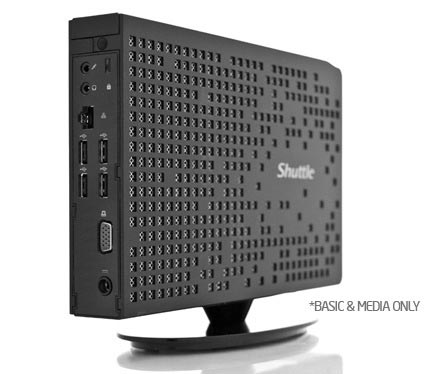
Shuttle XS3510MA - my dream come true

Of course, we can say again that the test of pudding is eating, so we compared the capabilities of the machine with the performance of Atomic machines we used to have. This was important just because we could see from the numbers how much the Atom had evolved.
In addition, we essentially introduced the usual programs, the difference being that Everest was replaced by AIDA64. Stone it, the nostalgia associated with the old name suits me well. We measured memory and storage speed, deployed CineBench R10, and WinRAR as well. We did not use the latest version of CineBench to compare the data obtained with our older measurements.
If you already have an Atom, we were also curious about consumption. On the previous page, the specifications show that the external power supply is not some muscular piece, so we expected that the electricity bill generated by the machine would not exclude us from our wallet. We looked at what the little one was eating with no load or full load. Well, 22 watts were measured without load, 27 watts with load below Furmark, and 64 watts under Aida29. I think these values speak for themselves. Under normal use, the machine consumes just over a third of the power of a 60-watt light bulb.
So let's take a quick look at the screenshots and the summary table!


Memory measurement

Hard disk measurement
Eee PC 1101HA | Eee PC 1008HA | Eee PC 1004DN | Shuttle X50 | Shuttle | |
Everest CPU Queen | 3150 | 3941 | 3919 | 6845 | 7788 |
Everest CPU PhotoWorxx | 1882 | 2183 | 2461 | 3648 | 4287 |
Everest FPU Julia | 653 | 809 | 811 | 1555 | 1145 |
CineBench R10 - CPU / CPU × 2 | 456/698 | 569/880 | 554/852 | 550/1550 | 570/1586 |
WinRAR 3.71 (kB / s) | 295 | 376 | 377 | 425 | 523 |
SuperPI 1M | 1:52 | 1:29 | 1:27 | 1:34 | 1:26 |
It can be seen that the new Atom is essentially better than the old one in all respects. However, there is one point where we have witnessed an interesting phenomenon, and that is the playback of h.264 HD content. Playback was found to be choppy for 1080p materials, so we took a quick look at the CPU load and saw that the load on all four threads (two physical cores + two virtual ones due to HT) was over 90%. At the same time, the GPU load was around 45%. It was obvious that the GPU didn't really help with playback, since if that had been the case, the load on the cores would have had to be much lower. On the other hand, it’s also thought-provoking that we only saw 45 percent load on the GPU. To be sure, we didn't see a trace of GPU acceleration during Media Player Classic, although so far this program has worked reliably during similar tests. However, it seems clear that GPU acceleration did not work, and that the CPU alone is not enough to play content with this resolution.

Luckily, it occurred to us that we were also trying out Windows Media Center, as it also supports GPU acceleration. We became richer again with some experience. Most importantly, we got completely different processor load values during MCE, which means that it is suspected that support for the new Ion is not yet resolved in all software. The other is that it doesn't matter what is packaged in an mkv file. In some films we encountered checkering, other films ran beautifully, smoothly and without errors. For us, this again only indicates that there are still small problems on the software line. Of course, it’s worth repeating that Ion 2 is still fairly new, so its support will certainly improve in the future.
At the end of the test, even a screen saver to be proof of what the correct GPU acceleration is capable of at full HD resolution. It is worth comparing the CPU load with the previous image!















